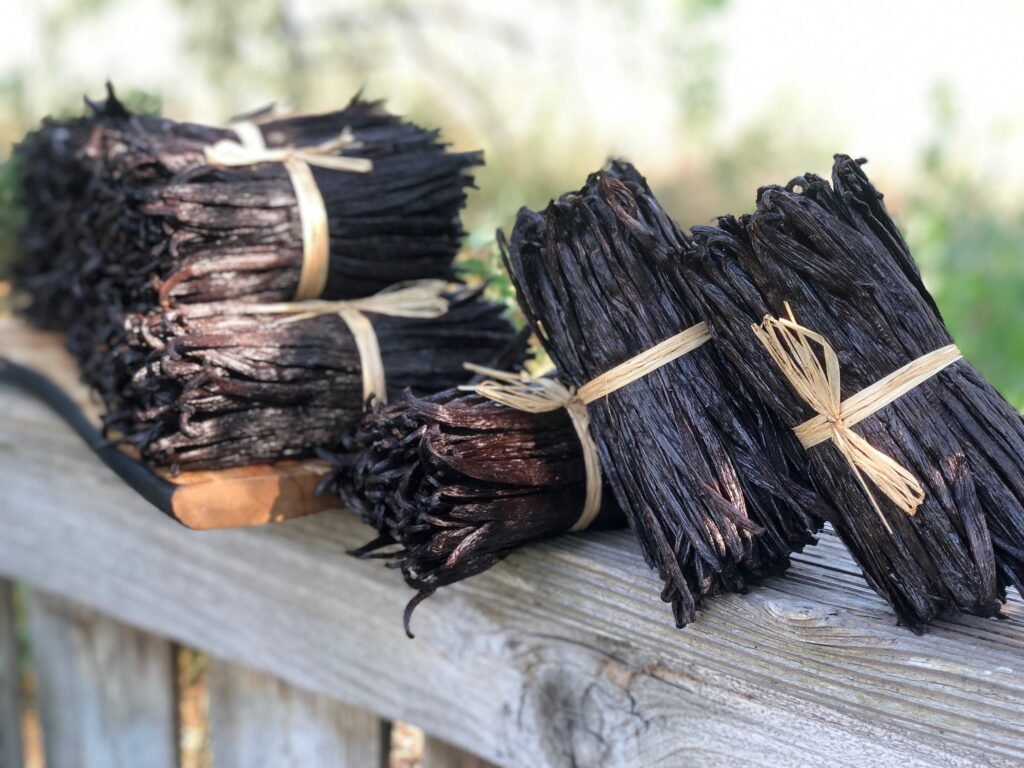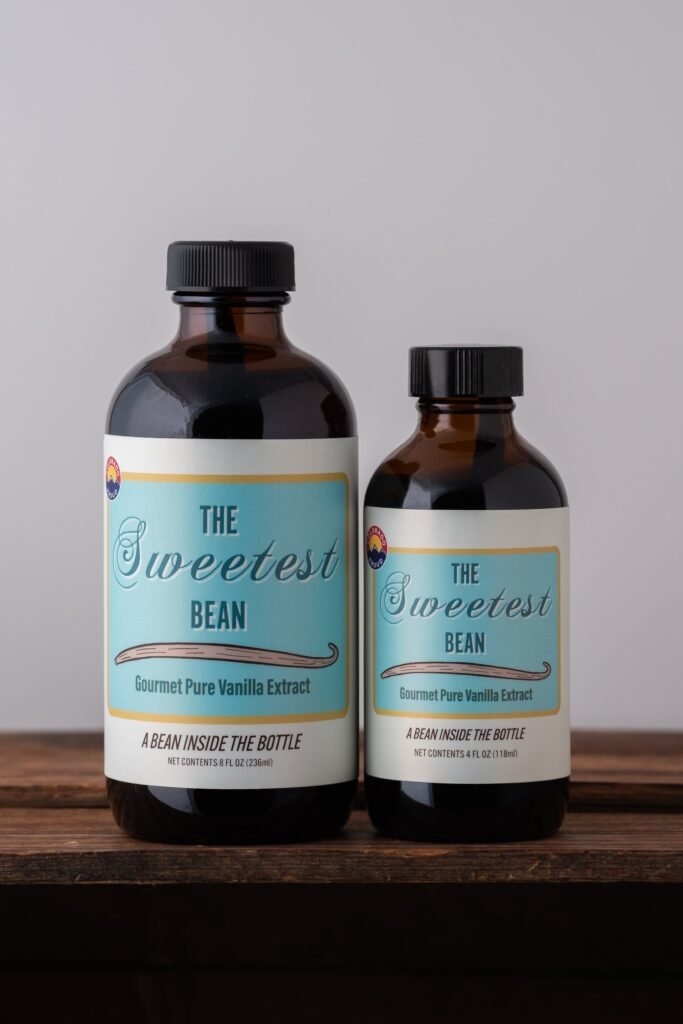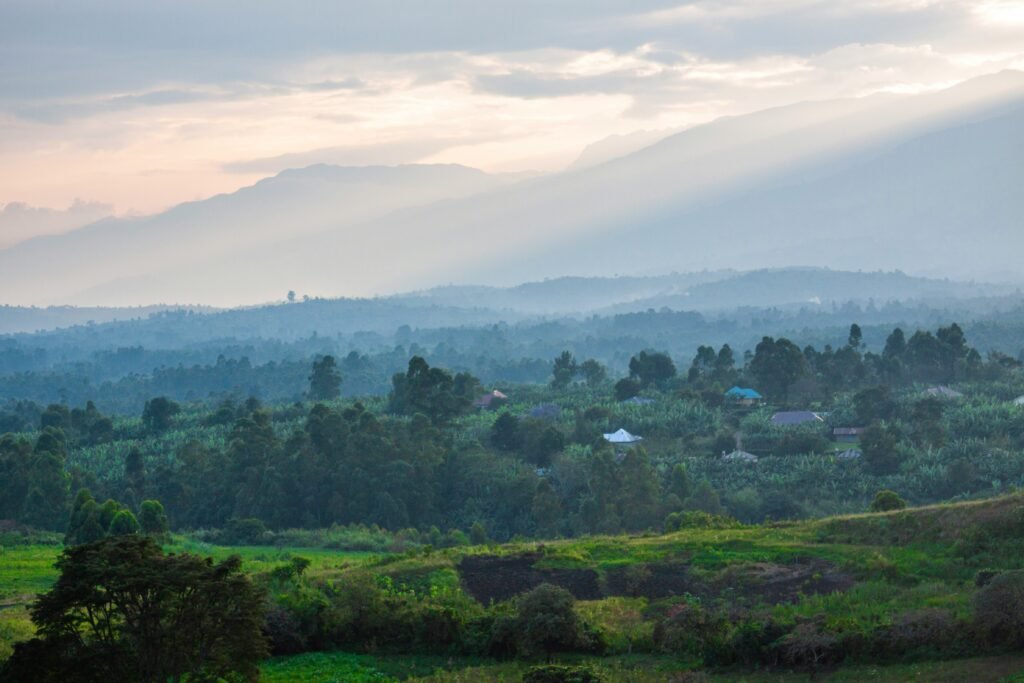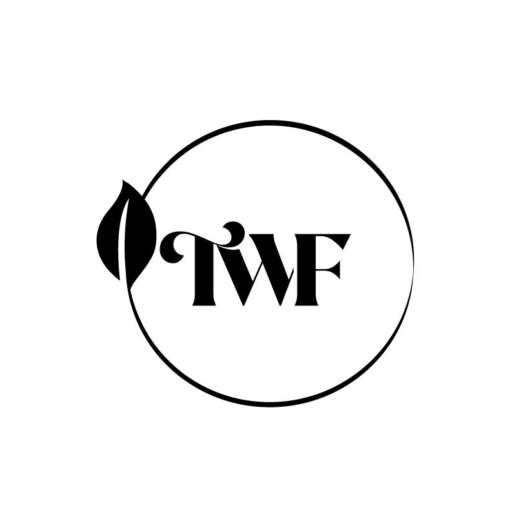Shana Gilbert, co-founder of The Sweetest Bean, shares how she built an ethical and environmentally responsible vanilla bean company.
| All products featured on The Wellness Feed are independently selected by our editors for their environmental and ethical impact. However, we may earn an affiliate commission when you buy something through our retail links. |
If you’re a baker, you’ve likely used vanilla. The aroma is unforgettable and a mainstay fragrant note in sweet cakes, candles, and perfumes. Despite its popularity, getting a single note of vanilla requires an intensive amount of labor and consideration to extract even a single bean. One country alone – Madagascar- supplies 80% of the world’s supply and it comes with a price tag that makes it one of the most expensive in the world for spices. It’s no wonder that the ‘vanilla’ we often see in stores or enjoy in candles is often heavily diluted or synthetically replicated. Authentic vanilla is one of the rarest spices in the world.
Whether you’re buying vanilla for an aromatic batch of cookies , trying a new luxury skincare product, or enjoying the scent in a candle, you’ll notice that there’s a difference in quality depending on the vanilla beans used. There are ethical concerns to take into consideration too. A rare crop, vanilla has been monopolized in areas where corupt buyers pay farmers poverty wages (despite the high price tags on store shelves) and illegally clear forests for vanilla cultivation. Going against the grain of unethical farming and production standards, Shana Gilbert educated herself about the history of the region to learn how to collaborate with farmers to create a company that holistically supports farmers and those in the region. In 2020 she co-founder of The Sweetest Bean. The company operates between Uganda and Colorado to harvest the aromatic beans in a way that preserves the natural environment and provides economic security to farmers and harvests.
If you’re anything like us at TWF, you’re always looking to learn how, why, and what makes one brand more sustainable and ethical than its counterparts. Even though vanilla seems quite small in the grand scheme of things, learning more about the plant helps us understand the impact of conscious decisions.

First off, I had no idea that vanilla beans are actually green! Can you explain the process from ‘green bean’ to bottled vanilla?
True. That is a very loaded question! So, I believe the most interesting thing about vanilla that no one really understands without a little research is that vanilla is an orchid. Orchids are very sensitive and precious flowers called Vanilla planifolia. This flower is probably the most popular flower in the world and no one even knows it’s name. It is only native to Mexico and originated from the Aztecs using this dried fruit of a orchid to flavor their cocoa — such a smart and innovative people. So, when the British first colonized Africa, they tried to just take move the vines from Mexico to a little island off the coast of Madagascar called Reunion island, but what they didn’t know is that couldn’t transport the bees that personally pollinated each orchid so a vanilla pod could grow. Then, the orchid flower only blooms on one single day for about an hour, if you don’t hand-pollinate that flower in that window, it dies. Can you image the insane labor it takes to get one bean!?! Once that bean grows, and it takes 9 months to grow, the same as an entire human being, then we’re ready to pick the green bean off the vine and sell it in the market to the curing teams. THAT’S US.
Our team buys the green beans in the market, they then blanch the beans in boiling water, a process that is not published or public knowledge. It’s only passed down from generation to generation. They then heat the beans for an hour every day in the hot sun for the next 2-3 months, each day they roll the beans up in a wool blanket and sweat out the flower — literally sweat the beans all night to release the vanillin flavor that has hundreds and hundreds of flavor profiles.
Once that process is complete, our team packages and ships it to us in Colorado where we start the next process of making a small batch of pure vanilla extract. We put an actual bean in every bottle of extract so the flavors continue to deepen.

Single Source Gourmet Pure Vanilla Extract comes with a vanilla bean inside for continued aging and enhanced flavor.
This is one of the best and most authentic flavors I’ve tasted!
from $18
Are there chemicals used during farming or curing?
There may be parts of the world that have learned to use chemicals for ward off pests or treat mold issues. However, in Uganda, all the Vanilla is grown at the base of the Rhenzori mountains and lives in the local forests and treed areas, the vines wrap around trees for stability. There are only small farms with a single farmer working his own vines, it’s not mass-produced in any way. There’s no GMO seeds because all vanilla vines grow out of previously grown vines which take 3-5 years to grow. Our best tool is a tiny stick for hand-pollinating and the sun for optimal curing.
Our extract is only pure alcohol which is cut with equal parts water and the best and oiliest vanilla beans in the world. Uganda, by the way, is the only country with 2 growing seasons, so we have fresh vanilla beans 2x a year. Whereas in Madagascar where they can only produce one season a year and you wait all year to buy it fresh again.

Rwenzori Mountains in Western Uganda has the 3rd highest mountain peak in Africa. Here at the base of the mountain where the orchids that vanilla beans are harvested from grow.
Image: Itote Rubombora
How do you work to ensure that ethical labor and wage standards are upheld for the farmers that you work with?
Great question! Most people don’t even think when they’re eating their creme brule or ice cream or croissant that there’s someone on the other side of the planet just trying to feed their family and work all day to make a product that only the wealthiest people in the world can enjoy. But it’s real in the vanilla world and in all spice industries. Our story is bit different.
I was a documentarian when I first traveled to Uganda to find my story. I moved in with a group of street kids for seven years and we had to survive, so I started many-many businesses over the years, We put them all through school; I even adopted one of them, my daughter Jesca, who’s now in college and our best sales girl! But even when you dedicate your life to putting kids through school, it’s still the developing world. There’s still no economy or jobs for them. So, a couple boys and I searched for the best business we could try and we landed on vanilla. It’s been a journey to say the least. It’s not for the faint of heart. There’s a lot of corruption, a lot of ups and down in the market especially when Madagascar suffers a hurricane and loses 2000 tons in a day and all the buyers flood in and jack up prices. But somehow we continue to grow…and persevere.
Our key is that I lived in Uganda a long time and raised a lot of kids. One of those boys grew up and is now the boss. He hires everyone. He knows the business inside and out. I’ve known him since he was about 8 years old. His name is Alex and he’s fully dedicated to the mission and vision of hiring great employees, paying minimum wage to the seasonal workers, and developing a great management team who are on monthly salary and have been working for him for years.

The harvesting process for vanilla beans takes several months to bring out the vanilla flavor.
Why vanilla and not another crop?
We originally tried nutmeg, then cinnamon, and eventually landed on vanilla. There was a crisis in the vanilla industry around 2005 when prices plummeted from $300/kg to $15-20/kg about the time synthetic vanilla saved companies money. All the farmers stopped growing it. Then, in about 2014, the market started to pick up again. Madagascar had a hurricane every year for about four years, so buyers returned, prices started to rise, and there was a window of success ahead, so the farmers picked back up about the time we were shopping. Prices rose to about the same cost of a kg of silver, vanilla was $600/kg by 2017. Now, we’re steadying again since a natural disaster hasn’t hit in a couple years.
How are you sustainable in your everyday life?
I hope we are sustainable. Alex sustains the Uganda side of the business, Laura and I work on growing slow and steady — that’s been our mentality for a few years now and it’s worked. We know how many vanilla to order each season and we have our regular clientele. That helps us set our budget. We do a steady amount of farmers’ markets to gain new customers and sell off the fresh crop. It’s been fun to see the growth. This year, we did move into a much larger warehouse in order to grow our stock even though we’re fully committed to small-batch brewing. And, Laura and I personally make all the product for quality control.
